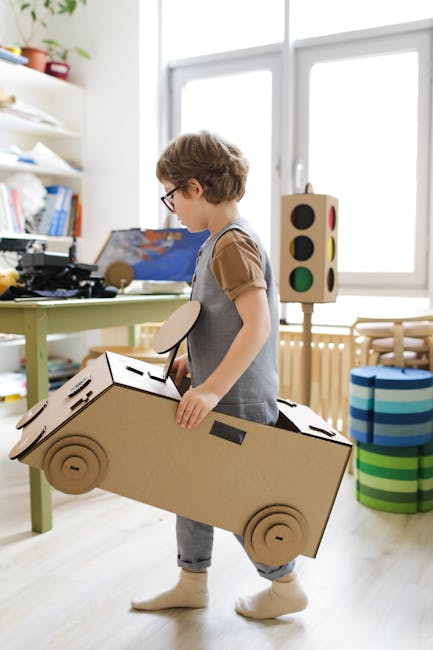The Best Toys for Encouraging Imaginative Play
Imaginative play is a cornerstone of childhood development, allowing kids to explore their creativity, develop problem-solving skills, and understand the world around them. In today’s tech-driven world, finding toys that inspire this kind of play is more important than ever. If you’re looking for the best toys to spark your child’s imagination, you’ve come to the right place! 🎨🧸
Table of Contents
1. Introduction
2. What Is Imaginative Play?
3. The Benefits of Imaginative Play
4. Top Toys for Imaginative Play
a. Building Blocks
b. Dollhouses
c. Dress-Up Clothes
d. Art Supplies
e. Play Kitchens
5. Conclusion
6. FAQs
Introduction
As parents and caregivers, we want to provide our children with the tools they need to grow and thrive. Toys that encourage imaginative play are vital in this endeavor. They foster creativity, emotional development, and social skills. But with so many options available, how do you choose the right ones? Let’s dive into the world of imaginative play and explore the best toys to support it.
What Is Imaginative Play?
Imaginative play, also known as pretend play, involves children using their creativity to invent scenarios and roles. It’s a type of play where the imagination is the primary inspiration, whether they’re pretending to be superheroes, chefs, or explorers on an adventure. This form of play is not only fun but also essential for cognitive and emotional development.
The Benefits of Imaginative Play
Imaginative play is more than just fun—it’s a crucial part of childhood development. Here are some of the key benefits:
1. Cognitive Development: Pretend play helps children learn to think and problem-solve creatively. They develop the ability to express themselves, plan, and organize.
2. Emotional Growth: Through role-play, children can explore different emotions and learn empathy by putting themselves in others’ shoes.
3. Social Skills: Playing with others in imaginative scenarios teaches cooperation, negotiation, and communication skills.
4. Language Skills: As kids narrate their play, they enhance their vocabulary and storytelling abilities.
Top Toys for Imaginative Play
Building Blocks
Building blocks are a timeless favorite that encourage creativity and engineering skills. Whether it’s simple wooden blocks or complex LEGO sets, these toys allow children to build their own worlds, fostering problem-solving skills and spatial awareness.
Dollhouses
Dollhouses offer a miniature world where children can create stories and scenarios. With furniture and tiny inhabitants, kids can act out everyday life, enhancing their understanding of social dynamics and household roles.
Dress-Up Clothes
Dress-up clothes are a wonderful way for children to explore different identities and roles. Whether they’re donning a superhero cape or a doctor’s coat, these costumes encourage role-playing and storytelling, sparking both individual and group play.
Art Supplies
Art supplies like paints, crayons, and modeling clay are excellent tools for imaginative expression. They allow children to create visual stories and explore their artistic skills. The freedom to create anything they envision builds confidence and innovation.
Play Kitchens
Play kitchens offer a realistic setting for kids to mimic adult behaviors. From cooking up imaginary meals to hosting tea parties, these setups encourage social interaction and practical life skills, all while having fun.
Conclusion
In a world filled with screens, it’s vital to offer children opportunities to engage in imaginative play. The toys we’ve highlighted—building blocks, dollhouses, dress-up clothes, art supplies, and play kitchens—are not only fun but also instrumental in helping children develop essential skills. By choosing toys that foster creativity and imagination, you’re supporting your child’s growth in the most enjoyable way possible. 🌟
FAQs
Q: What age is best for imaginative play?
A: Imaginative play can start as early as toddlerhood and continues to be beneficial throughout childhood. Each stage offers unique opportunities for development.
Q: How can I encourage my child to engage in imaginative play?
A: Provide a variety of toys and materials that spark creativity, and create a safe, open-ended play environment. Join in their play to model imaginative scenarios.
Q: Are electronic toys suitable for imaginative play?
A: While some electronic toys can enhance learning, they often provide limited opportunities for open-ended imaginative play compared to traditional toys.
Remember, the most important thing is to encourage your child’s imagination and creativity every chance you get. Happy playing! 🎈
